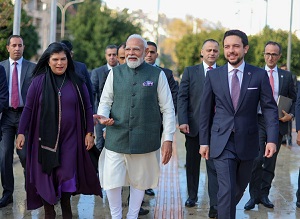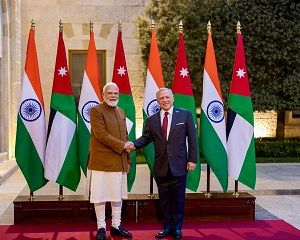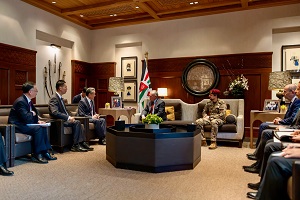When Donald J. Trump ran for president in 2016, there was not much love for tariffs in Washington. Many Republicans and Democrats believed that putting levies on imports created economic inefficiencies and that free trade was the best recipe for growth.
That view has largely fallen out of fashion in 2024. While Trump and Vice President Kamala Harris, the Democratic nominee, differ greatly in their campaign proposals, both of their parties are increasingly embracing tariffs as an essential tool in protecting American manufacturers from Chinese and other global competitors.
It has been a sharp reversal from previous decades, when most politicians fought to lower tariffs rather than raise them. But the loss of American manufacturing jobs as a result of globalization and China’s focus on churning out cheap exports have created a bipartisan backlash against more open trade. Given that Trump’s 2016 win capitalized on such sentiments, Democrats have been striving to avoid losing voters opposed to free trade.
“On economic policy and trade issues, you have both major parties moving in the same direction,” said Nick Iacovella, a senior vice president at the Coalition for a Prosperous America, which advocates tariffs and domestic investments in industry.
Iacovella said that Trump would most likely go further on tariffs than Harris would, but that no matter who won the election “it’s still going to be a tariffs administration, and an industrial policy one.”
Harris has sought to differentiate herself from Trump’s trade proposals, which include tariffs of 10 percent to 20 percent on most imports, as well as levies of more than 60 percent on China. Many economists say that level of tariffs would drive up prices for consumers, since companies would be likely to pass on higher import costs.
At the Democratic National Convention in Chicago last week, Harris described the proposals as “a national sales tax — call it a Trump tax” — and said the plans “would raise prices on middle-class families by almost $4,000 a year.”
Economists’ estimates vary, but the left-leaning Center for American Progress Action Fund calculated that the tariffs could increase costs on a middle-income family by $3,900 per year.
Despite early criticisms of Trump’s trade policy, the Biden administration has kept the former president’s initial tariffs on China in place and proposed adding another $18 billion of new levies on some Chinese products, including a 100 percent tax on electric vehicles. The administration also proposed new tariffs on electric vehicle batteries, semiconductors, steel and medical products, in an effort to ensure that newly invested American factories can stay in business.
Inu Manak, a trade policy expert at the Council on Foreign Relations, said politicians of both parties were now more willing to argue that they could increase tariffs without any negative effects. She pointed to a recent poll by the Cato Institute that showed that Republicans and Democrats had high levels of support for hypothetical tariffs imposed by their party but not the other party.
The tariffs that Trump has floated are orders of magnitude larger than what President Biden’s administration has proposed, presumably covering more than $3 trillion of trade, and implying a much bigger impact on the economy.
In addition to a universal tariff on all imports and higher tariffs on China, he has suggested a reciprocal policy in which the United States will match tariffs that another nation imposes on American exports.
Speaking in Asheville, N.C., on Aug. 14, Trump said he might double the 10 percent tariff he had already proposed on most foreign goods.
“We are going to have 10 to 20 percent tariffs on foreign countries that have been ripping us off for years,” he told the crowd.
Economists generally agree that tariffs of this size would have a noticeable effect on consumer prices, while also raising costs for manufacturers that buy imported parts or materials. About a third of US imports are inputs that go into American farms and factories.
Mary Lovely, an economist at the Peterson Institute, said tariffs seemed to be the “solution du jour — a supposed remedy for a hollowed-out manufacturing sector, left-behind communities, and income inequality.”
But the tariffs have proved popular with industries that have faced stiff competition from Chinese firms, like makers of kitchen cabinets. Paul Wellborn, the president of Wellborn Cabinet, a manufacturer of kitchen and bath cabinets in Ashland, Ala., credited tariffs with saving his company and the industry.
Wellborn Cabinet’s sales fell after the Great Recession, when the housing market collapsed and with it demand for new cabinets. But as the economy started to recover, business was still slow, Wellborn said. The industry realized that Chinese companies had taken over about 40 percent of the market and that their share was continuing to grow.




